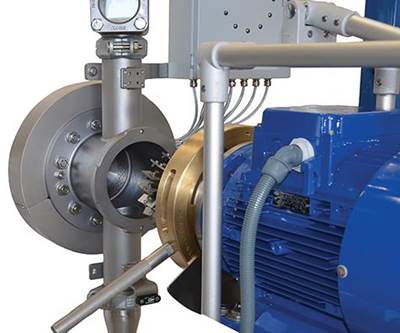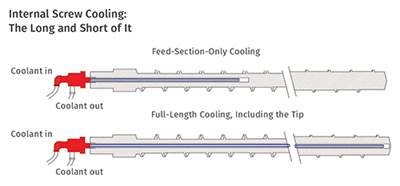processing tips
MATERIALS: Don’t Guess Your Way Through Root Cause Analysis
More than 50 different polymer test techniques can be used to find root causes of problems. Of these, five or six are fairly common. Use them to take the guesswork out of why a product failed.
Read MoreHow to Avoid Problems When Using Commercial Purging Compounds
The best approach is to implement and standardize a three-step program to ensure you are purging in the best and most cost-effective manner possible.
Read MoreMold-Heating/Cooling Technology Keeps Cosmetic Parts Looking ‘Hot’
New rapid mold-temperature control technology allows molder to eliminate cosmetic defects like knit lines or sink marks in parts that require a glossy finish or feature texturing.
Read MoreEXTRUSION: Processing Rigid PVC? Know Your Rheology
Before choosing and sizing extruders for running rigid vinyl, it is wise to bone up on the viscosity behavior of the material.
Read MoreMATERIALS: Performance in Polyethylene: Density Matters: Part II
Remembering the case of the failed gas tanks.
Read MoreSolving Common Problems in Underwater Pelletizing
Pellet quality and consistency are critical to any compounding operation. But in underwater pelletizing, a variety of issues can stand in the way. Here’s how to fix them.
Read MoreResin Conveying: No More ‘Spaghetti Bowl’
You now have technology choices to avoid the maze of conveying tubes that form a ‘spaghetti bowl’ or ‘rat’s nest’ in a central materials-handling system. Here’s how they stack up.
Read MoreTOOLING: Balancing the Heat Budget In Injection Molds
Basic formulas for how much heat you must pull out of the mold to achieve a set cycle time
Read MoreEXTRUSION: When Internal Screw Cooling Makes Sense
Internal screw cooling could help you solve solids-feeding and burning problems.
Read MoreINJECTION MOLDING: Setting Mold Protection Takes Time But Saves More
Mold protection is often neglected, but it more than pays for the time and attention required.
Read More


















